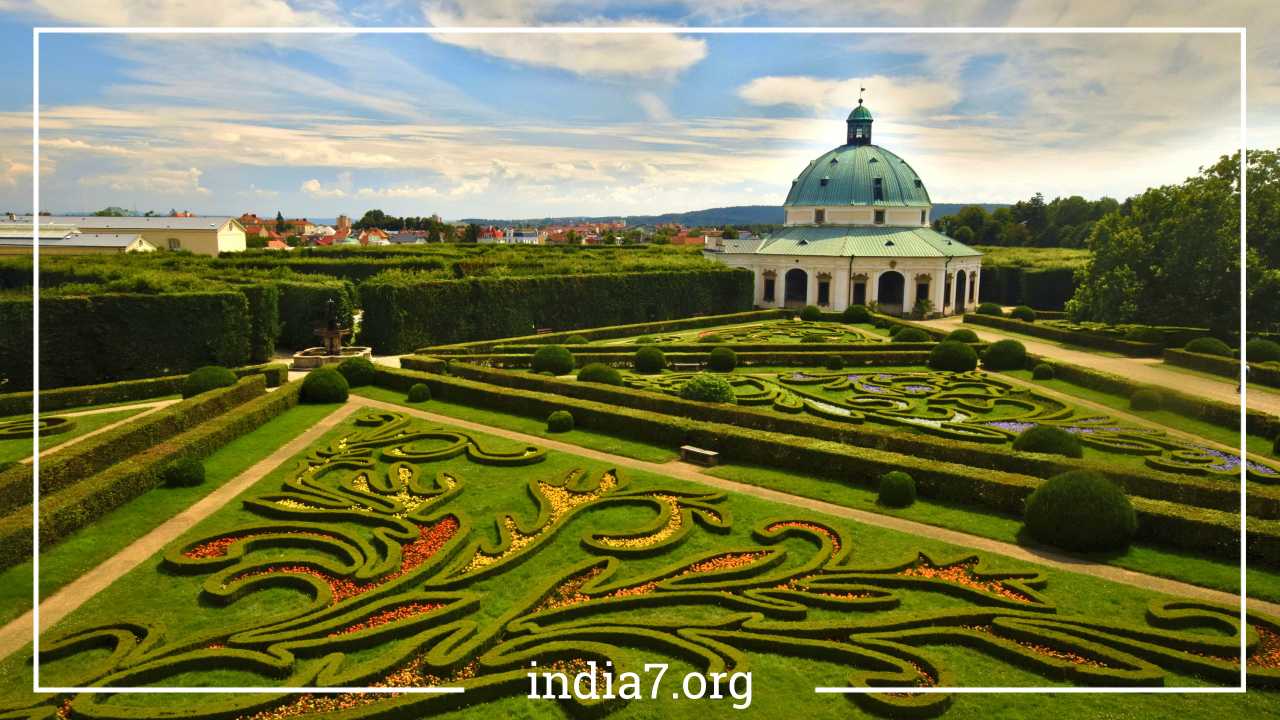Travel Guide to the Czech Republic: Everything You Need to Know

Czech Republic
The Czech Republic, situated in the heart of Central Europe, is a captivating country known for its rich history, stunning architecture, and vibrant culture. With a population of approximately 10.2 million people and the official language being Czech, this picturesque nation offers a plethora of experiences for travelers.
From the historic streets of Prague, the capital and largest city, to the serene landscapes of Bohemia and Moravia, the Czech Republic has something to offer every type of traveler. In this comprehensive travel guide, we’ll explore the various facets of the country, including its geography, climate, culture, attractions, travel tips, and much more.
Geography and Location
The Czech Republic is strategically located in Central Europe, sharing its borders with Poland to the north, Germany to the northwest and west, Austria to the south, and Slovakia to the east. This landlocked nation is strategically positioned on some of Europe’s most important land routes, making it a crossroads of cultures and trade.
Historical Background
Before diving into the practical aspects of traveling to the Czech Republic, let’s take a moment to appreciate its historical significance. The Czech Republic was once part of Czechoslovakia, a country that existed until January 1993 when it peacefully dissolved, leading to the formation of the Czech Republic and the Slovak Republic. This dissolution marked an important chapter in Central European history and allowed these two nations to develop their unique identities.
Regions of the Czech Republic
The Czech Republic is often divided into two main regions based on geographical and cultural characteristics: Bohemia and Moravia.
- Bohemia: This region, situated in the western part of the country, is known for its picturesque landscapes, charming towns, and historic sites. Bohemian cities and towns are famous for their spa resorts and vineyards, making it a popular destination for relaxation and wine enthusiasts. Moreover, Bohemia is home to many splendid castles and chateaux, which are open to visitors.
- Moravia: Located in the eastern part of the country, Moravia offers a different charm with its rolling hills, vineyards, and cultural heritage. This region is known for its folk traditions, including music and dance, as well as its historical towns and cities.
Climate
The climate of the Czech Republic can be described as temperate, with distinct seasons. Here’s a breakdown of what to expect:
- Summers: Summers in the Czech Republic are generally warm, with average temperatures ranging from 20°C to 30°C (68°F to 86°F). It’s the ideal time for outdoor activities and exploring the country’s natural beauty.
- Winters: Winters can be cold, with average temperatures in the range of -5°C to 5°C (23°F to 41°F). Snowfall is common during the winter months, making it a perfect time for winter sports enthusiasts.
- Spring and Autumn: These transitional seasons offer mild weather, making them pleasant times to visit if you prefer to avoid extreme temperatures.
It’s worth noting that due to varying altitudes in different parts of the country, temperature variations can be significant. Higher-altitude areas experience lower temperatures and more precipitation, while lower-altitude areas have milder weather.
Local Customs
Understanding and respecting local customs is essential when traveling in any foreign country. In the Czech Republic, here are some customs and etiquette tips to keep in mind:
- Dress Code: Czechs generally dress conservatively and casually in everyday situations. However, if you plan to dine at formal restaurants or attend special events, it’s advisable to dress more formally.
- Tipping: Tipping is customary in the Czech Republic. In restaurants, hotels, and taxis, it is common to leave a tip of 5% to 10% of the bill. For exceptional service, you can round up the amount or offer a slightly larger tip.
Attractions
The Czech Republic boasts a wide range of attractions that cater to various interests, including history, architecture, nature, and culture. Here are some must-visit places and attractions:
- The Castle District (Hradèany): This district, located in Prague, is a treasure trove of historic churches, museums, gardens, fortifications, and state apartments. It offers a glimpse into the country’s royal history.
- St. Vitus Cathedral: Situated within the Castle District, this cathedral is a masterpiece of Gothic architecture. Its soaring spires dominate the Prague skyline, and it’s the largest church in the Czech Republic.
- Charles Bridge (Karluv Most): One of the most iconic landmarks in Prague, Charles Bridge is a pedestrian bridge adorned with statues and offering stunning views of the Vltava River.
- Old Town Square (Staromĕstské Námestí): This vibrant square in the heart of Prague is surrounded by historical structures, including the famous Astronomical Clock. It hosts various events and markets throughout the year, including the enchanting Christmas market.
- The Jewish Museum: Located in Prague, this is the largest Jewish Museum in Central Europe. It houses a vast collection of Judaic art and documents the rich Jewish history in the region.
- Vyšehrad: Perched on a rock above the river, Vyšehrad is a historic hill fort offering panoramic views of Prague. It’s a peaceful escape from the bustling city below.
Travel to the Czech Republic
Now, let’s delve into the practical aspects of traveling to the Czech Republic, including transportation options, travel documents, and more.
By Air
The primary international gateway to the Czech Republic is Prague Ruzyne International Airport (PRG), located approximately 10 miles northwest of Prague. The national airline of the Czech Republic is Czech Airlines, but there are also many other international carriers operating flights to and from this airport. Prague Airport is well-connected to major European cities and serves as a convenient entry point for travelers from around the world.
By Rail
The Czech Republic boasts an extensive and efficient rail network, making train travel a convenient option for getting around the country and connecting to neighboring European countries. If you’re arriving from Western Europe, there are convenient train connections via cities such as Berlin, Frankfurt, Munich, Vienna, and Zurich to Prague. Trains are known for their reliability and offer a comfortable way to explore the picturesque landscapes of the Czech Republic.
Travel Documents and Visa
Before traveling to the Czech Republic, it’s essential to ensure you have the necessary travel documents and check visa requirements based on your nationality. As of my last knowledge update in September 2021, the Czech Republic is part of the Schengen Area. This means that if you are a citizen of a Schengen Area member country, you can travel to the Czech Republic for short stays (up to 90 days) without needing a visa. However, visa requirements can change, so it’s crucial to verify the current requirements with the Czech embassy or consulate in your home country before your trip.
For travelers from non-Schengen countries, such as the United States, Canada, and Australia, a Schengen Visa is typically required for short visits to the Czech Republic. The visa application process and requirements may vary depending on your nationality, so it’s essential to plan ahead and apply for a visa well in advance of your intended travel dates.
Currency and Banking
The official currency of the Czech Republic is the Czech Koruna (CZK). While major credit cards are widely accepted in hotels, restaurants, and larger stores, it’s a good idea to carry some cash, especially when visiting smaller towns or local markets. ATMs are readily available in cities and towns, making it easy to withdraw Czech Koruna as needed. Currency exchange offices are also prevalent, but it’s advisable to compare rates to get the best value.
Language
The official language of the Czech Republic is Czech. While English is commonly spoken in tourist areas and by younger generations, especially in Prague, it’s helpful to learn a few basic Czech phrases and expressions to enhance your travel experience and interact with locals.
Transportation Within the Country
Once you’ve arrived in the Czech Republic, you’ll need to navigate the country’s transportation options to explore its various regions and attractions.
- Public Transportation: The Czech Republic has an efficient public transportation system, including buses, trams, and metros in cities like Prague. Public transportation is a convenient and cost-effective way to get around within cities and towns.
- Car Rental: If you plan to explore more remote areas or wish to have greater flexibility in your travel itinerary, renting a car is a popular option. The road network in the Czech Republic is well-maintained, and driving is relatively straightforward.
- Cycling: For outdoor enthusiasts, the Czech Republic offers an extensive network of cycling trails, particularly in rural areas and national parks. You can rent bicycles in many cities and enjoy scenic rides through the countryside.
Accommodation
The Czech Republic offers a wide range of accommodation options to suit different budgets and preferences. From luxury hotels in historic city centers to cozy guesthouses in charming villages, you’ll find accommodation to fit your needs. Here are some common types of lodging:
- Hotels: Whether you’re looking for a five-star luxury hotel or a comfortable mid-range option, the Czech Republic has a diverse selection of hotels in major cities and tourist destinations.
- Pensions and Guesthouses: These smaller, family-run accommodations offer a more intimate and personalized experience. They are often found in rural areas and are perfect for travelers seeking a cozy atmosphere.
- Hostels: If you’re traveling on a budget or prefer a more communal atmosphere, hostels are widely available in Czech cities. They offer dormitory-style rooms and private options.
- Holiday Apartments: For travelers who want the convenience of a home away from home, holiday apartments and vacation rentals are available in various sizes and locations.
Cuisine and Dining
Czech cuisine is hearty and flavorful, with dishes that are sure to satisfy your taste buds. Here are some classic Czech dishes to try during your visit:
- Goulash (Guláš): A hearty stew made with tender beef or pork, vegetables, and a rich paprika-infused sauce.
- Svíčková: A popular Czech dish featuring marinated sirloin steak served with a creamy sauce and bread dumplings.
- Trdelník: A delicious pastry, often coated in cinnamon and sugar, popular at Christmas markets and street food stalls.
- Pilsner Beer: The Czech Republic is renowned for its beer culture, and Pilsner-style lagers are a highlight. Be sure to try a cold pint of the local brew.
- Koláče: Sweet pastries filled with fruit jam, poppy seeds, or sweet cheese, often enjoyed with coffee.
- Smažený Sýr: Deep-fried cheese, typically served with a side of tartar sauce.
- Czech Pastries: Czechs have a love for pastries, and you’ll find a wide variety of sweet treats in local bakeries and cafes.
Shopping
Exploring local markets and shops is an excellent way to immerse yourself in Czech culture and find unique souvenirs. Here are some items to consider bringing home:
- Czech Crystal and Glass: The Czech Republic is famous for its high-quality crystal and glassware. Look for intricate glass sculptures, vases, and glassware in various styles.
- Bohemian Garnet Jewelry: These deep red gemstones are a specialty of the region. You can find beautiful garnet jewelry, including rings, earrings, and necklaces.
- Wooden Toys: Traditional wooden toys and marionettes make charming gifts for children and collectors.
- Pottery: Handcrafted ceramics and pottery, including plates, mugs, and decorative items, are popular souvenirs.
- Puppets and Marionettes: Prague is known for its puppetry traditions. You can find a wide range of handcrafted puppets and marionettes in souvenir shops.
- Czech Beer and Spirits: If you’re a fan of Czech beer or spirits, consider purchasing a bottle or two to enjoy back home or as gifts.
Duty-Free Items
When traveling to the Czech Republic, you may wonder about duty-free allowances for bringing items into the country. Here are some guidelines for duty-free items, but please note that these allowances can change, so it’s essential to check the latest regulations before your trip:
- Tobacco Products:
- For EU countries: You can bring 800 cigarettes, 400 cigarillos, 200 cigars, or 1 kilogram of tobacco.
- For Non-EU countries: You can bring 200 cigarettes, 100 cigarillos, 50 cigars, or 250 grams of tobacco.
- Alcohol:
- For EU countries: You can bring 10 liters of spirits with an alcohol content over 22%, or 20 liters of alcoholic beverages with an alcohol volume less than 22%, or 90 liters of wine, or 60 liters of sparkling wine, or 110 liters of beer.
- For Non-EU countries: You can bring 1 liter of spirits or 2 liters of wine.
- Perfume and Toiletries: You can bring 50 grams of perfume or 250 milliliters of eau de toilette.
- Food and Gifts: You are allowed to bring food, fruits, medications, and flowers for personal use. Additionally, gifts up to €175 are exempt from duties.
Prohibited Items
It’s crucial to be aware of items that are prohibited when traveling to the Czech Republic. Bringing prohibited items can result in fines and legal consequences. Common prohibited items include:
- Un-canned goods, meat, or dairy products: These are subject to strict import regulations due to health and safety concerns.
- Narcotics: Possession of illegal drugs is a criminal offense in the Czech Republic and can lead to severe penalties.
- Firearms, Ammunition, and Weapons: Special permits are required for firearms and weapons, and they must be declared at customs.
- Eggs, Plants, and Endangered Species: Restrictions apply to the importation of certain agricultural and wildlife products to prevent the spread of diseases and protect endangered species.
- Fireworks: Fireworks are regulated and may require permits for importation.
- Alcoholic Beverages with High Alcohol Content: Excessive amounts of alcohol with a high alcohol content may be subject to restrictions.
Health and Safety
Traveling to the Czech Republic is generally safe, and the country has a well-developed healthcare system. Here are some health and safety tips for your trip:
- Travel Insurance: It’s advisable to have comprehensive travel insurance that covers medical emergencies, trip cancellations, and lost luggage.
- Emergency Services: The emergency number for police, medical, and fire emergencies is 112.
- Water: Tap water is generally safe to drink in the Czech Republic. However, if you have concerns, you can purchase bottled water.
- Vaccinations: Check with your healthcare provider for any recommended vaccinations before traveling.
- Safety Precautions: Exercise standard safety precautions, such as safeguarding your belongings, being aware of your surroundings, and avoiding poorly lit or isolated areas at night.
- Healthcare: The Czech Republic has a high standard of healthcare, and medical facilities in major cities are well-equipped. EU citizens can access healthcare services with a European Health Insurance Card (EHIC).
Final Thoughts
The Czech Republic offers a diverse and captivating travel experience, from exploring historic castles in Prague to savoring traditional Czech cuisine and immersing yourself in the country’s rich cultural heritage. With its beautiful landscapes, vibrant cities, and welcoming locals, the Czech Republic is a destination that will leave you with lasting memories. Whether you’re interested in history, architecture, nature, or simply enjoying the delights of Czech beer and cuisine, this Central European gem has something for everyone. So, pack your bags, brush up on your Czech phrases, and get ready to embark on an unforgettable journey through the heart of Europe. Whether you’re strolling through the charming streets of Prague or hiking in the pristine countryside, the Czech Republic awaits your exploration with open arms.



